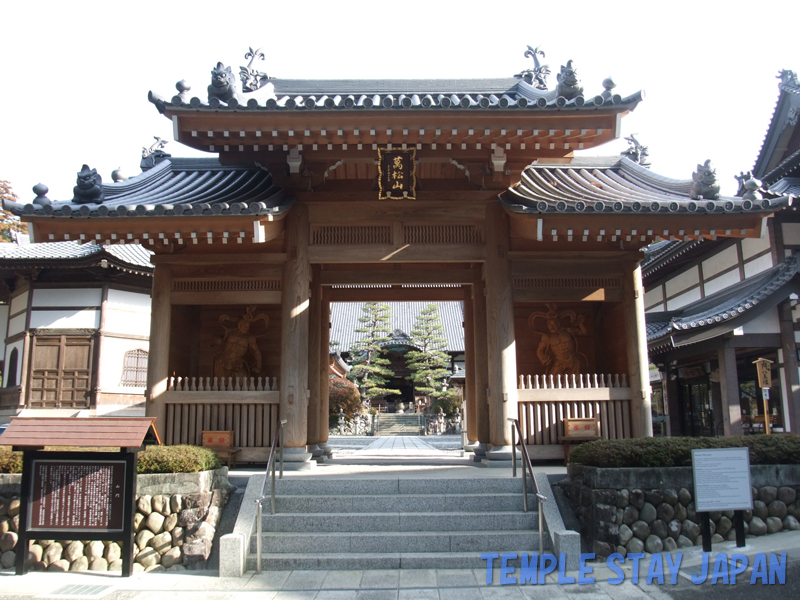Introduction to Kasuisai Temple
Kasuisai is an ancient temple with a history of over 600 years.
There is a story that Tokugawa Ieyasu, the first shogun of the Tokugawa clan, once told a monk who had fallen asleep in front of him, “You may sleep.” It is said that the temple got its name from this story. Kasuisai means a temple where you can sleep.
Shukubo (temple stay)
This toilet is said to be the best toilet in Japan. It was built in 1937 using the cutting-edge technology of the time, and in the center stands a statue of Ucchusma.
Toilets in Zen temples are said to be places of training where talking is absolutely forbidden. Ucchusma is an ancient Indian fire god who was adopted into Buddhism. It is said that it purifies the toilet as it burns away evil spirits. His four arms hold a skull and a treasure club, and Nandikesvara is trampled at his feet.
This toilet is still in use today. We all used it after taking pictures. This toilet is unisex, but there is also a separate toilet for women only.
Buddhist vegetarian cuisine
For dinner, we had buddhist vegetarian cuisine. Meals were laid out in a magnificent room with sliding doors painted with lions.
The dishes served included rice, miso soup, rape blossom salad, sesame tofu, simmered dishes, tempura, dumplings with ginger sauce, pickles, strawberry, and sweet potato yokan.
It was very filling and I was impressed by how much gluten was used. Each dish was carefully crafted and I was able to enjoy a variety of flavors.
Zen meditation
After dinner, we did zazen (Zen meditation). First, the monk taught me how to enter the hall and how to sit. Sit upright and breathe deeply and slowly. After about 30 minutes of zazen, my legs hurt, but I felt like my mind had calmed down.
Guest room
Since we were staying as a group, our guest room was a large one measuring 24 tatami mats + 10.5 tatami mats. Yukata robes were provided.
The bathroom had a bathtub that could fit about three people and four showers. The women’s bathroom has six showers and is apparently larger than the men’s.
Morning service
We went to bed at 9 p.m., in line with the monks’ training time. The monk struck a wooden clapper to signal that it was night. The next morning, we were woken up at 5:45, and the monk rang a bell to signal the start of the morning.
The service in the main hall began at 6am. Bells were rung at regular intervals and sutras were chanted by the monks.
After the service in the main hall was finished, we moved to the other hall at the back. This is where the god of fire prevention is enshrined. There was a large Tengu mask on display. Tengu is a legendary Japanese creature that lives in the mountains, has a long nose, and uses mysterious magic.
Drums and bells were beaten loudly and prayers were made for the removal of daily troubles.
There was a sermon after the service. After the service there was a sermon in which it was said that the fire prevention god can also eliminate desires from the heart.
Porridge breakfast
Once we got back to our room, it was time for breakfast. It expresses gratitude and a vow to receive the meal.
The menu included red bean porridge, kelp and mushrooms boiled in soy sauce, spinach salad, tofu and kudzu soup, stir-fried burdock root, pickled radish, and pickled plums.
Monks in training eat porridge for breakfast. I think the meals were a little more luxurious than those served to monks, with more variety of dishes, but the porridge in the morning was very healthy and delicious.
Monk’s guide
Finally, the monk gave us a tour of the temple. Kasuisai is famous for its peonies, and there is a peony garden and sliding doors painted with pictures of peonies.
We were also able to enter the buildings within the temple grounds and the treasure museum, which were well worth seeing. I was deeply moved by witnessing the lives of these monks.

